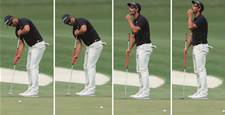Adam Scott’s decision to return to an unanchored long putter has reignited debate around the anchoring rule that came into effect in 2016. We look at how Scott’s stroke has changed, whether it’s working and if you should try it.
It’s hard to argue against the theory that Adam Scott’s 2013 Masters victory wielding an anchored long putter played a significant role in the R&A and USGA’s decision to ban anchored strokes.
The image of Scott, often held up as one of golf’s poster boys due to his enviable golf swing, draped over what was always considered an ‘old man’s’ club clearly didn’t sit right with the game’s governing bodies. Nor did his steady putting performance, that while not nearly as good as his early days on Tour with a short putter, was good enough to take him to the top spot of the world rankings.
Once the poorly worded and slightly reactive rule was written, and a date set for it to come into effect, Scott set about finding a new putting method, admitting a frustrating close to 2015 with the long putter made it an easy choice to return to the short stick.

With mixed results, the search continued into 2018, as the Queenslander changed grips, putters and seemingly everything in between to find some consistency, rather than occasional streaky performances.
Now, having admitted at the 2017 Australian PGA, where he temporarily reinserted an unanchored long putter, to being influenced by the controversial success of Bernhard Langer and Scott McCarron on the Champions Tour, Scott has once again put the broomstick in play. This time he has given more thought to the setup of the club itself and the best way to perform a legal unanchored stroke.
And so far the decision has been a good one, helping the former World No.1 continue his major championship start streak and find some consistency on the greens. But not without some unwanted comments from the peanut gallery of course.
Continue through the following pages for a full analysis of Scott’s new stroke.

SHORT PUTT
Not unlike his full swing, Scott’s address position and setup (pic 1) over this short putt on the putting green at The Players Championship is one to stick on the wall and mimic if you are employing the long putter as he does.
Scott looks athletic as he sets up to the ball even with a putter of around 50 inches in length, but is slightly further away than in 2013 and has a slightly more rounded upper back. These changes, undoubtedly made to ensure a lack of an anchor point and to make room for the butt of the club to move without touching his body, are very minor to keep the motion as close to the one he employed when anchoring.
Scott described his new unanchored stroke at the Australian PGA in November 2017 and again at this year’s Players Championship as being very similar to the one he utilised when the thumb of his left hand was pushed into his sternum.
“It just doesn’t feel much different at all than whether it’s anchored to the body or not. I mean, it’s doing the same thing it feels like to me,” Scott said.
As Adam takes the putter away and returns it to impact (pics 1,2,3) notice how he maintains his body positions and angles, one of the major benefits and characteristics of a stroke with the long putter, which has been lacking in recent years when he has used the short putter.

Once contact has been made, Scott’s upper body moves up and to the left (pics 5 and 6) to make room for the putter and remain within the letter of the law. This is another of the slight changes in his stroke, which is most noticeable on long putts, but is perhaps of primary concern for the 37-year-old on the shorter putts that he has been known to be slightly shaky with. The change in body position potentially results in an open putter face and putts pushed to the right as well as strikes made low on the face, a mis-hit that can wreak havoc with a player’s speed.
Scott’s tendency to steer the putter regardless of length on short putts is one he has struggled with in recent years, the Queenslander noting that his return to a more reactionary stroke with the long putter has helped in this regard this year.
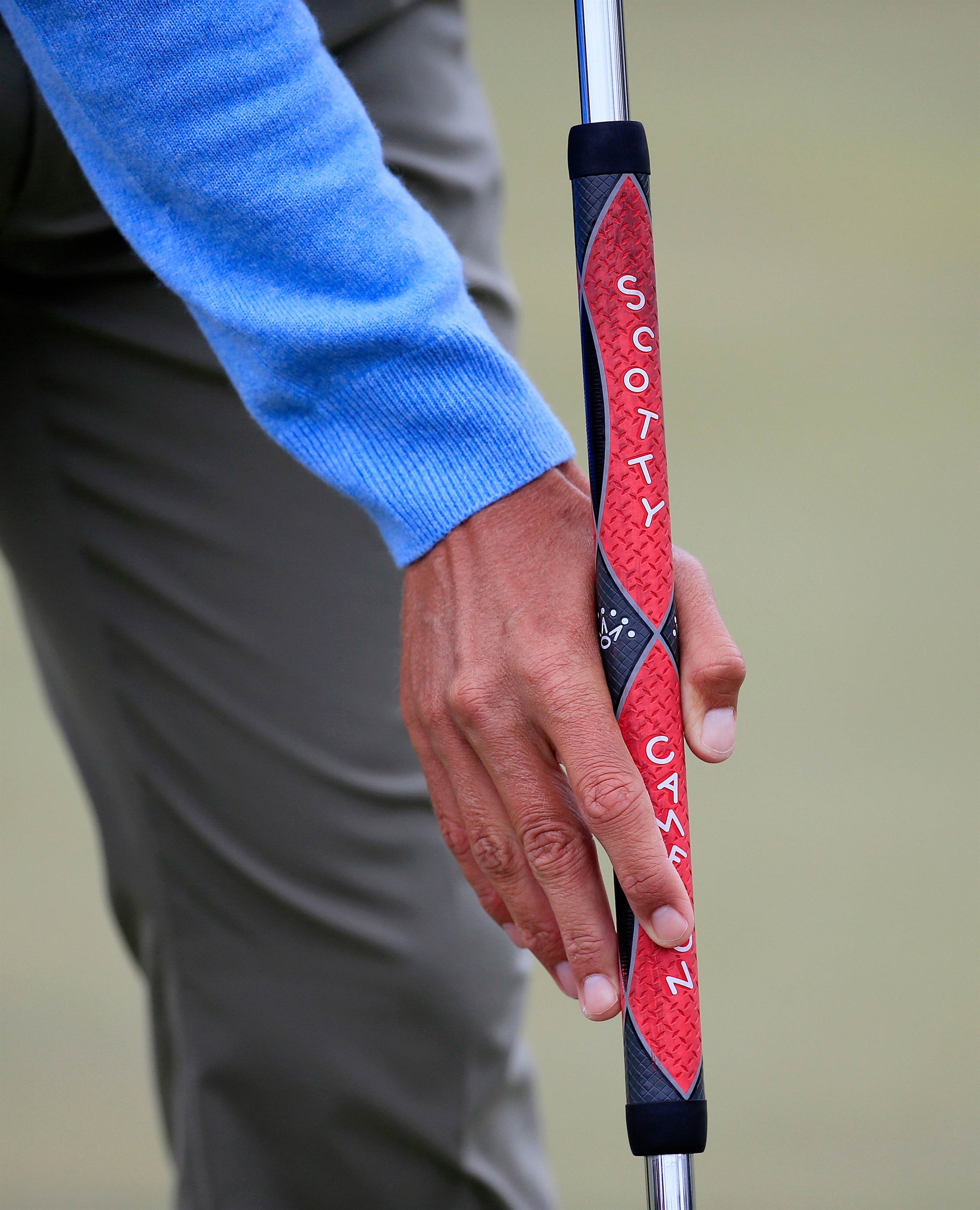
“It’s a feeling of ease, it’s a very much no thought, and the body just moves and the ball just goes. At times we have all felt like we steer the golf ball, whether it’s shots or putts, and the putting just felt very easy and free, like it just got in the way and, yeah, it was very much instinct. And I feel when I putted my best with the long putter, it was just easy as well,” Scott said at The Players.
One other key area that has seen a modification from Scott, albeit a slight one, since reinserting the long putter into his bag, is his right hand grip.
The enlarged photo (above) shows Scott’s grip in 2013, his hand positioned more on top of the grip, whereas this year Scott has his right hand almost entirely underneath the shaft with his thumb and forefinger the only contact points. This means his dominant hand is simply going along for the ride, a great feeling for anyone who gets a little jerky around the hole.
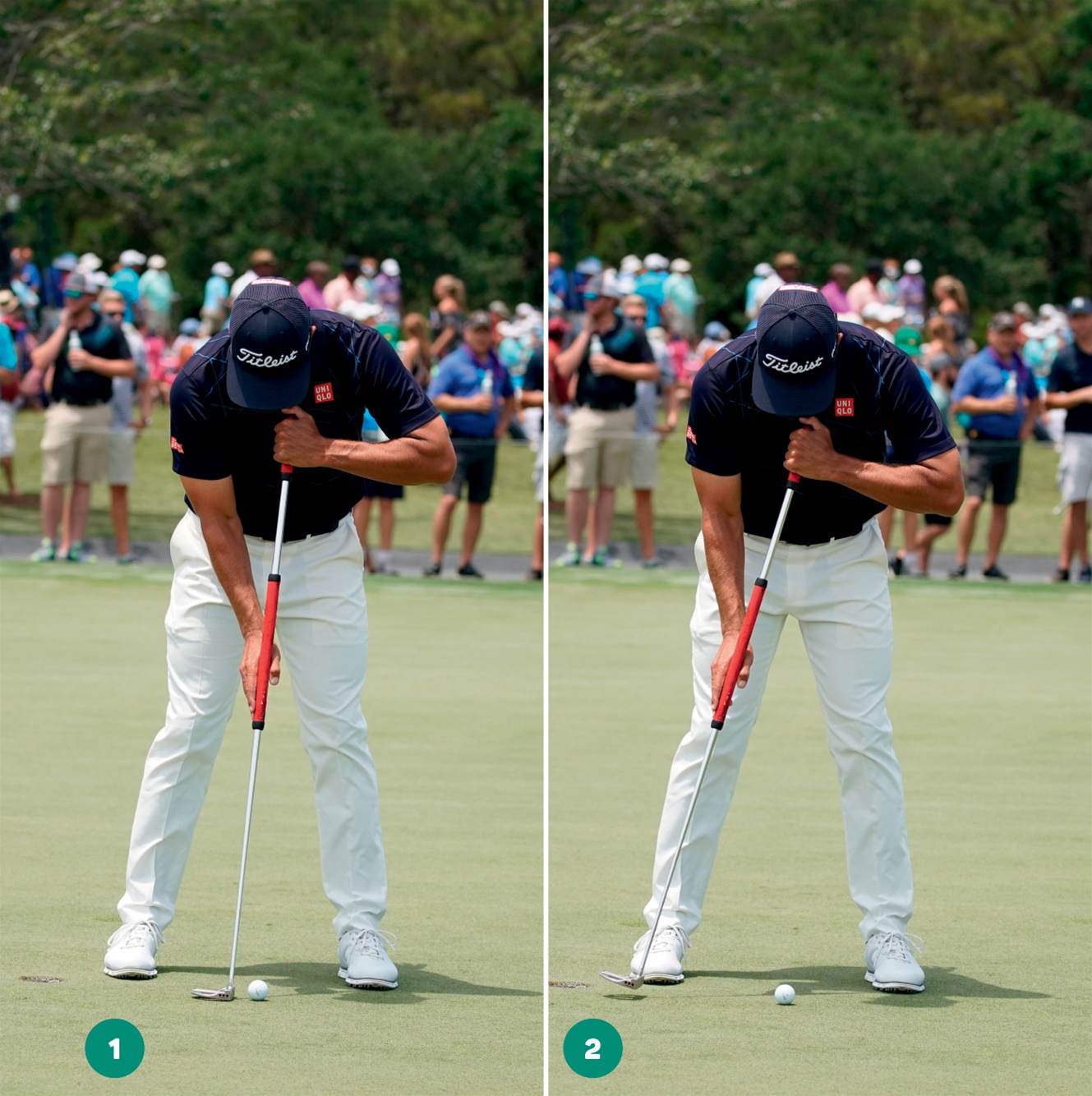
LONG PUTT
Despite the pendulum-like action encouraging an even back and through stroke, putting from long range has always been the hardest part of using an anchored long putter.
For Scott and his unanchored stroke, this will also prove a test, particularly on slower greens, where there is a greater chance of the putter making contact with his body during the stroke. And although unintentional contact with the body and or clothing during the stroke is allowed under rule 14-1b, it is something Scott, and anyone else employing the technique, will want to limit to avoid any questioning of the stroke’s legality.
Adam’s posture looks great as he starts the back stroke (pic 1). His hands are a little in front of the ball, whereas ideally the putter face and shaft should point straight up and down at address, however, Scott does a good job of returning to this position later. And despite this unique characteristic, Scott’s technique with the long putter is aesthetically one of the best around. The Queenslander hopes to match his form to the function of players like Langer.
“I’ve just noticed like everybody else that Bernhard Langer and Scott McCarron make everything they look at and have done since the anchoring ban and moving it away from the body,” Scott said late last year. “So it was actually pointed out to me that this year they both recorded the best ever putting stats since stats have been kept. Both of them beat the old best. You know, I don’t know if it’s just a coincidence or if they had just a really good year, but maybe they’ve found the best way to putt.”
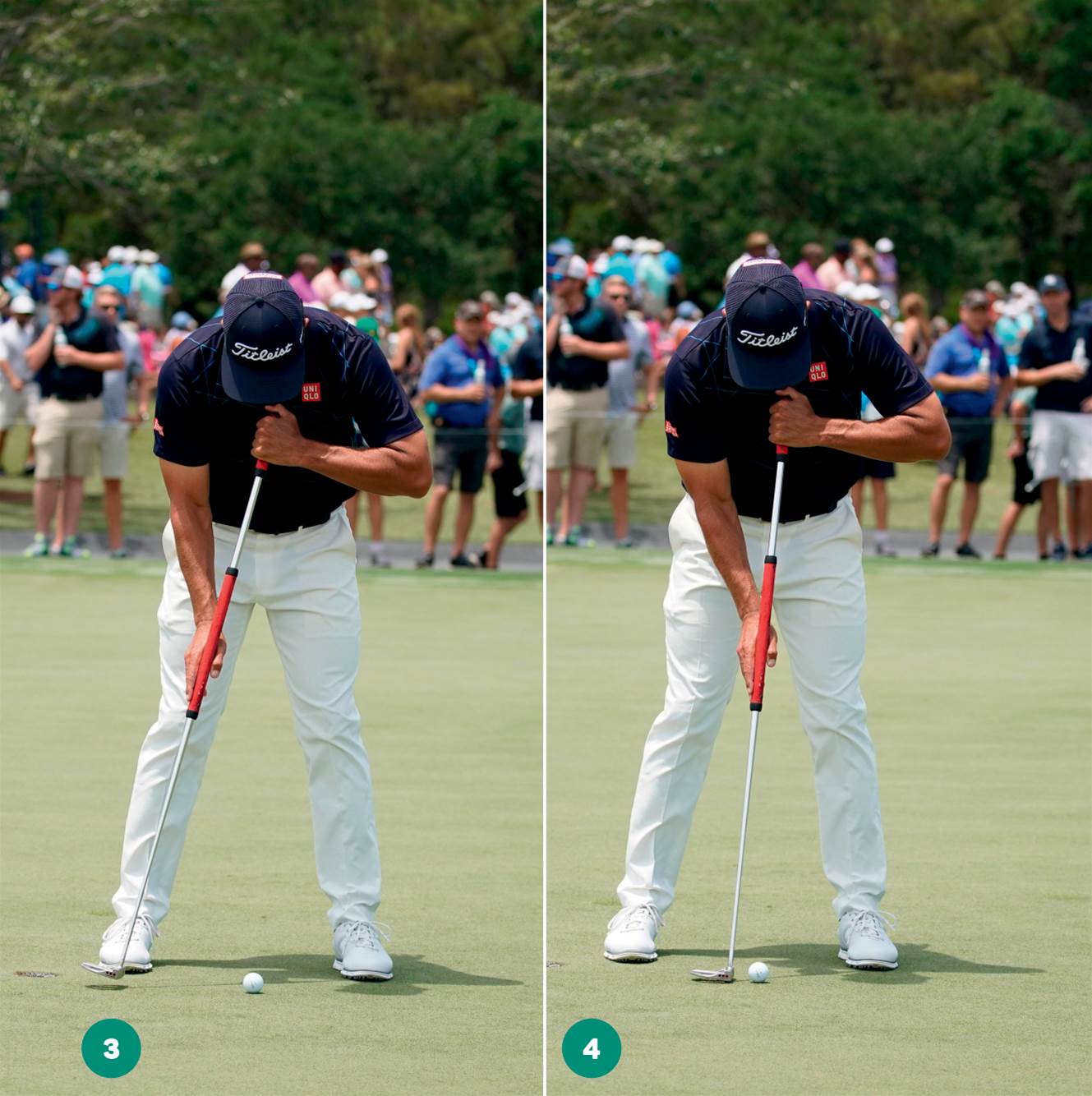
As was the case with the short putt on the previous pages, Scott’s ability to maintain his angles and his stability in both his upper and lower body, as well as his head position, on the way back and through (pics 1, 2, 3 and 4) is to be admired and emulated, regardless of whether you use a short or long putter.
Scott then returns the putter and his hands to almost the same position at impact as it was at address (pic 4). This mirror image is one of the main reasons Scott’s consistency has improved with the long putter.

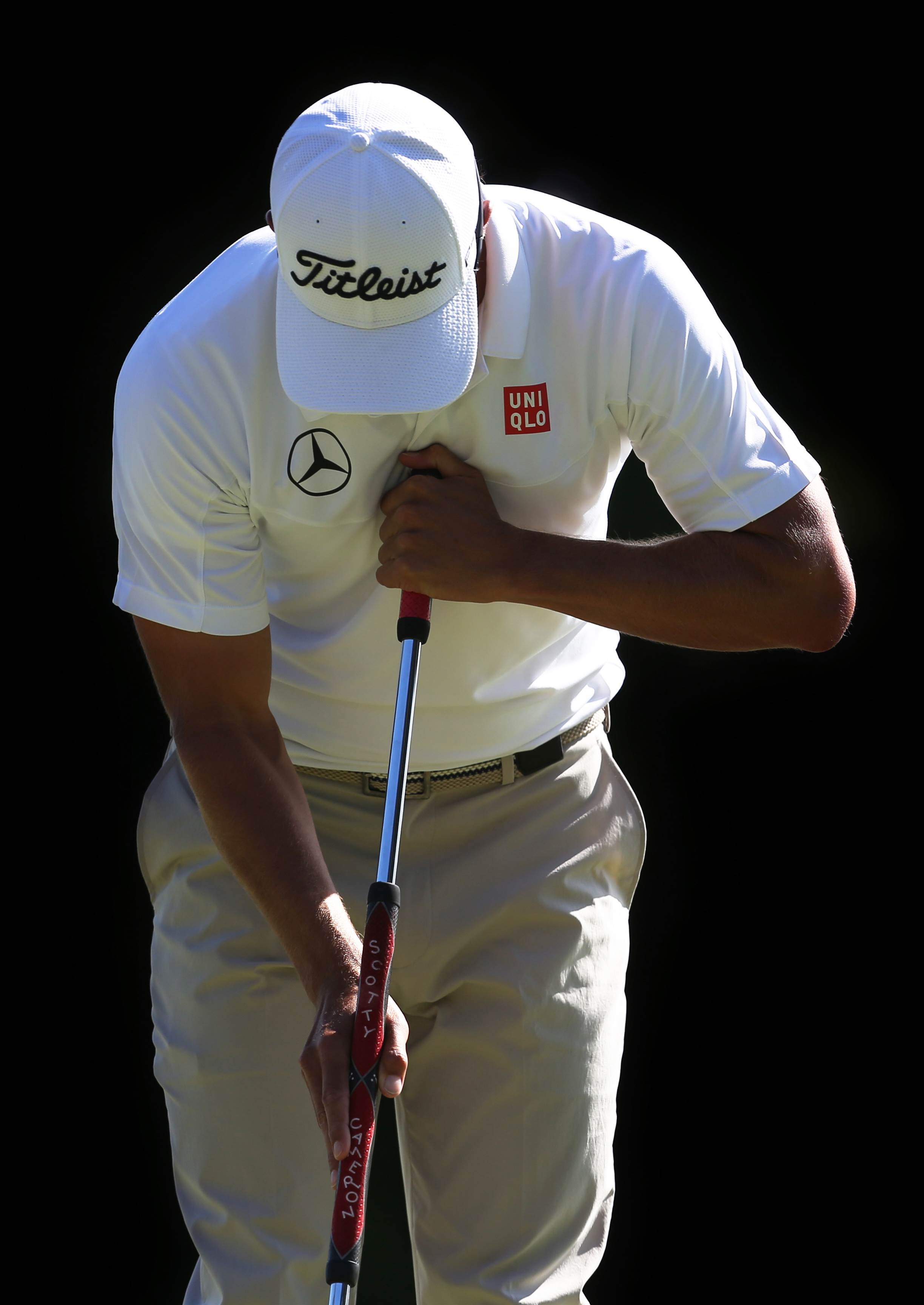
Just after impact (pic 5) Scott achieves a more ‘correct’ position with the shaft pointing to the centre of his sternum, evidence that he is making a smooth stroke where the ball has simply gotten in the way, rather than applying a hit at impact.
RIGHT: Scott at the 2013 Australian Open, when anchoring the putter was allowed under the rules. PHOTO: Getty Images/Steve Christo - Corbis.
The same point in the stroke is also where evidence that Scott is playing within the rules and has had to adjust his stroke from previous years is clear. In the close up picture from 2013 (right) the butt of club is firmly pressed against his chest, causing his shirt to wrinkle and his chest to narrow, whereas in 2018 the distance between Scott’s right shoulder and left hand has increased.
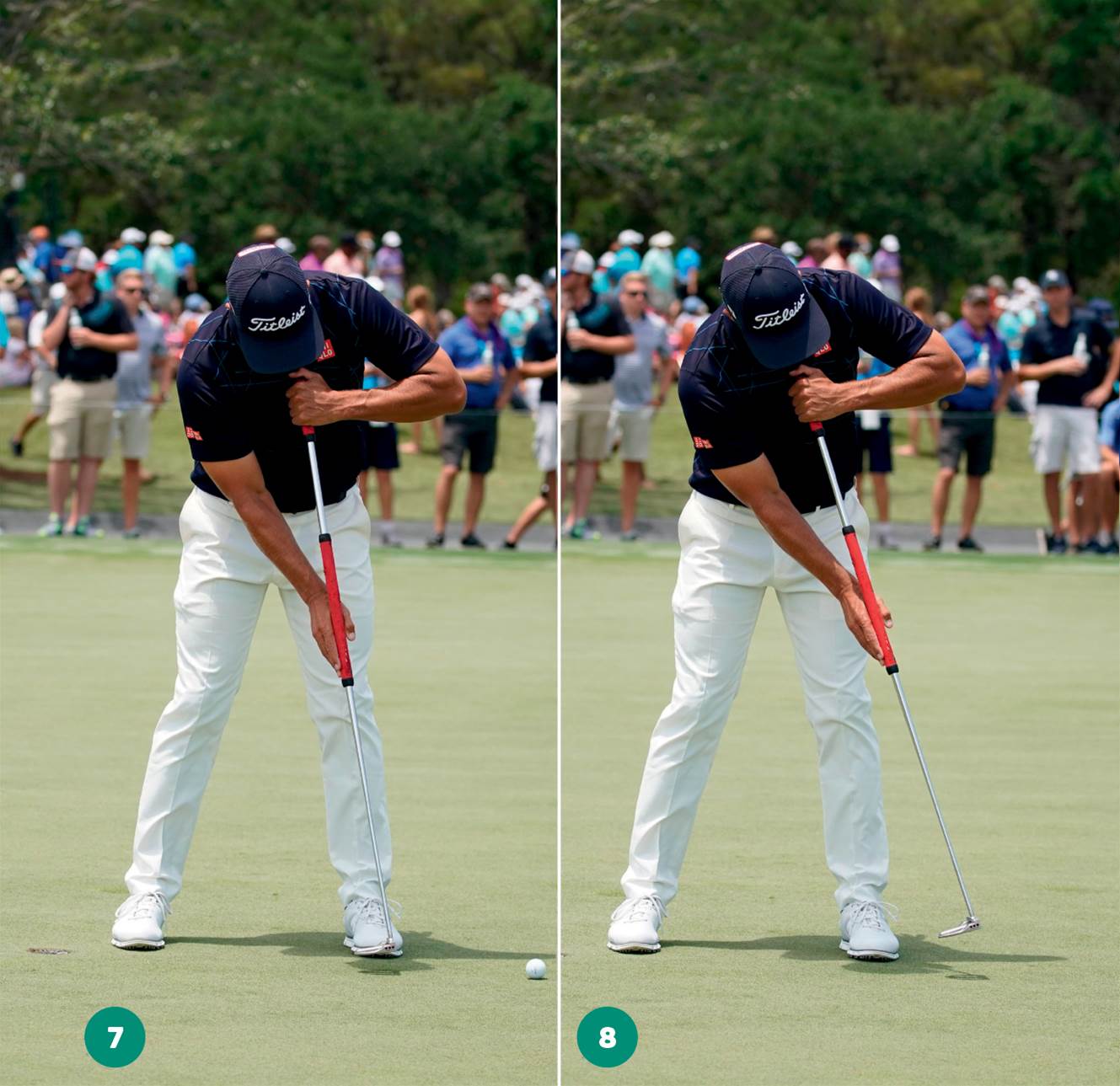
These changes continue as the ball heads towards the target (pics 7 and 8), with Adam’s body and head position noticeably lifting to allow the unanchored putter to move through to the end of his follow through.
Just like short putters, where the number of grip and putter styles are endless, long putter users must work out what is best for them based on personal preference and capabilities. And Adam Scott is no different, both when first inserting the long putter in 2011, and once again to uncover the best method with the putter moved away from his chest.
At first, Scott like many, presumed a shorter putter was required to avoid anchoring. But time, and experimentation, has led to him using a putter with the exact specifications as in previous years. The model he used at the 2018 US Open is the same that nearly delivered him the Open Championship in 2012, with white tennis grip tape applied over the top of a well-worn grip.
“When I fiddled with it in December of last year, I probably didn’t do good enough testing and I immediately cut one a bit shorter, two inches shorter and putted with that, and it felt all right but not great, and there was a different head than I’m using at the moment. I probably didn’t give it a fair enough go. That was my fault,” Scott said of his initial experimentation with the long putter in 2017 at this year’s Players.
“This is the original putter that’s a slightly different-sized head and a bit different weight, and it’s the same length as I used to use, and it feels better.”
Although Scott’s stroke is still very much a work in progress and he has a tendency to make putting changes suddenly, he appears to be on the right track. His stroke, like his golf swing, is the pin-up move for long putter users.
SHOULD YOU TRY IT?
If, like Scott, you haven’t found a comfortable way to putt since the anchoring ban, unanchored putting might be worth a try, but there are a few things to consider before putting the long putter back in play.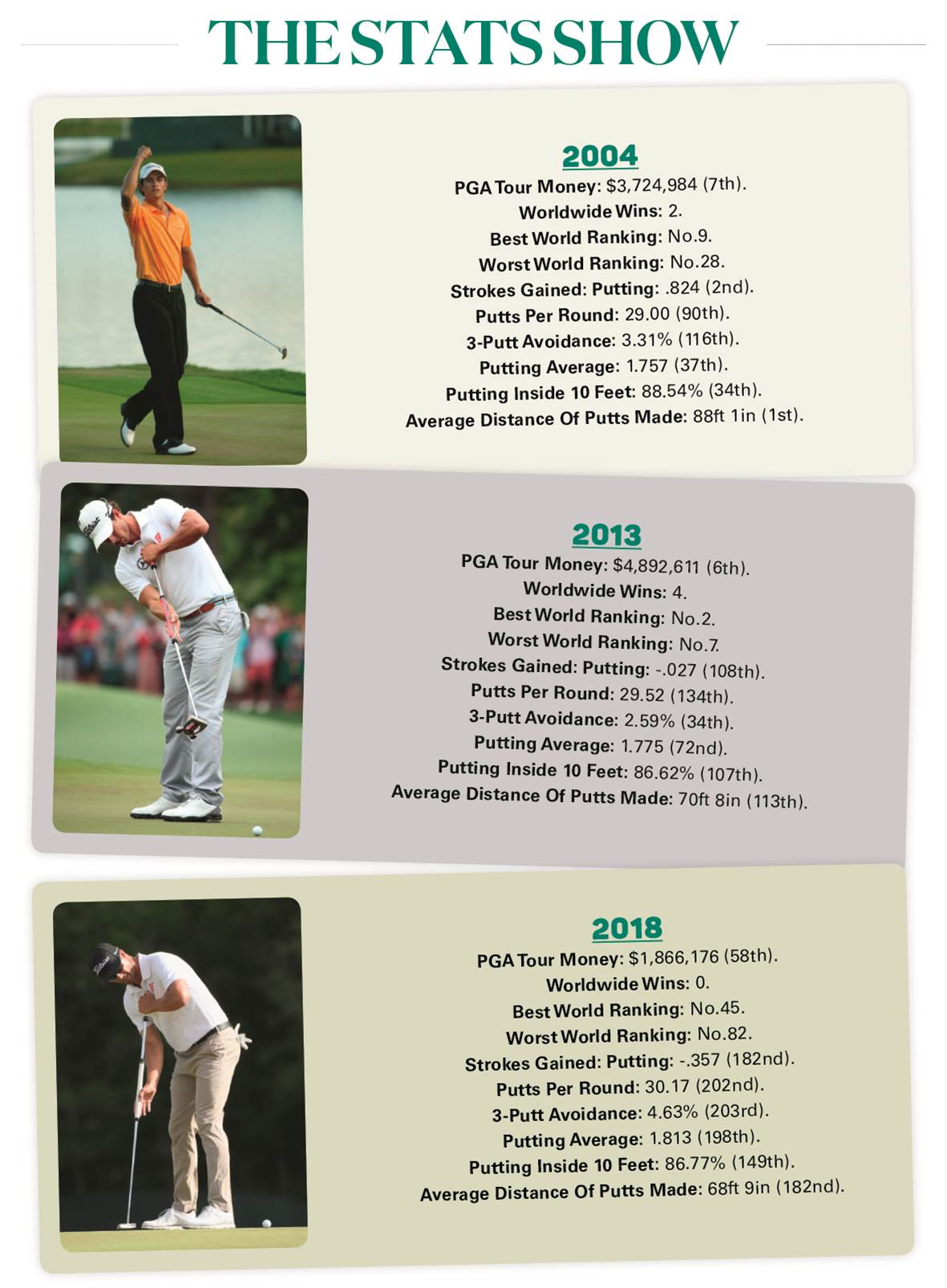
As Scott himself discovered, there is no right or wrong in regards to technique and club. But as a rule of thumb, former anchored putters will adapt best to a putter of the same length as used previously. However, some will find a shorter putter easier to get comfortable with, and others will benefit from a slightly more upright lie angle due to the handle being held further away from the body.

The right hand position, despite being very passive during the stroke, is a case of trial and error. With the pencil grip, Scott’s thumb and forefinger hold and Bernhard Langer’s modified claw among the most popular options.
RIGHT: An unanchored long putter gripped with the pencil grip. PHOTO: Brendan James.
While at first unanchored putting might seem an awkward option, the stroke should feel extremely similar to when the club is anchored. And making practice strokes with the putter anchored will ensure the body is moving the putter rather than the hands.
Like Scott however, an adjustment in body positons on the follow through is required to make sure the putter never anchors and doesn’t run out of room and hit the ground.
As Adam’s stats prove, unanchored putting isn’t a faultless option. But the familiarity for former users and the consistency the long putter encourages, make it worth a try for anyone who struggles on the greens.
Related Articles

Scott's sentimental option with Australian PGA on move

Scott fires but needs 'beauty' to end title drought
.jpg&h=172&w=306&c=1&s=1)




